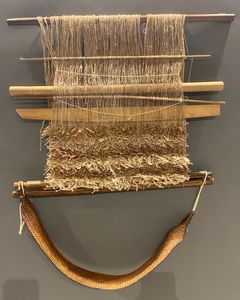I am honestly surprised at how little interest the rest of India has in the Himalayan region in general. Right from Kashmir and Ladakh to Himachal, Uttarakhand and the northeast—these areas are filled and fueled by their own unique stories and histories, but are almost foreign to the rest of us.
This is why an ongoing exhibition at Travancore House, Delhi, put together by industrialist Siddhartha Lal’s Royal Enfield Social Mission, has visitors transfixed. More so, if like me, they come from outside Delhi, as the national capital has become the natural first flight out of the Himalayan regions. The result is that Delhi is naturally treated to the finest wools from this region, as well as its street-side staple, the momo.
‘Journeying Across the Himalayas’ could have well been the title to Lal’s autobiography. The young CEO and MD of Eicher Motors is a renowned motorbike enthusiast; he is also credited with reviving the Indian, and now multinational, motorcycle company Royal Enfield. Lal’s passion is seen through every exercise of the company’s impact series—building design-savvy and green infrastructure across villages and small towns in the motorcycling routes of the Himalayas, as well as telling stories from the very small and very proud communities that live there. This exhibit has brought together 50 such communities, artists, creative practitioners and small businesses to showcase here. One of the highlights is a Rs20 lakh prize, in collaboration with Vogue India, to a young fashion label from the region. Surprisingly, there were as many as 2,000 applicants.
Just a handful of small businesses out of the Himalayas are known to an interested few—woollens from Looms of Ladakh and Lena Ladakh; fashion from Assam’s Sonam Dubal and Arunachal’s Jenjum Gadi (both denizens of Delhi now); Tripura’s Aratrik Dev Varman (label Tilla) works out of Ahmedabad; and Namza Couture and Stanzin Palmo of Zilzom are from Leh.
The 10-day exhibit featured many delightful new brands I was happy to discover—Kullvi Whims from Himachal, gorgeous sheepskin rugs by The Craft Theory, Manoon wellness, Saldon 2112, and Ura Maku’s modern take on the indigenous textiles of Assam.
There were installations by Tilla (a large deconstructed back-strap loom used to weave the Tripuri breast cloth called risha); a gorgeous motorcycle redesigned to mimic a snow leopard by Bobbee Singh of Old Delhi motorcycles; and a collection of helmets decorated by various artists. The garden of food stalls featured Kashmiri and northeast delights. And a large stage had panel discussions from morning to evening, only to break into music performances by their revered local musicians.
But mostly, it’s the talks and panel discussions featuring some true experts that gave the penny-drop moments. One on Gender and Climate Change was an eye opener; a city dweller could barely imagine how environmental changes impacted women of science, those from rural India, seed farmers and cooperative workers. The panelists—Urvashi Butalia (founder of Zubaan Books), Sahana Ghosh (associate editor at Nature India), and Seno Tsuhah (an indigenous women’s leader from Chizami, Nagaland)—were all riveting. Gourmet farm-to-table stories from Pankaj Sharma, Shalini Philip and the women who run Camp Kharu were enchanting, too. Dr Monisha Ahmed, a textile anthropologist and a PhD from Oxford, whose Ladakh Arts and Media museum is truly the last word on Ladakh, formed the backbone of so many ideas here.
I love that women of the Himalayan communities are more progressive than their male counterparts, exercise more agency, and are more enthused about livelihood. Even in a showcase backed by a motorcycle company.
X@namratazakaria


